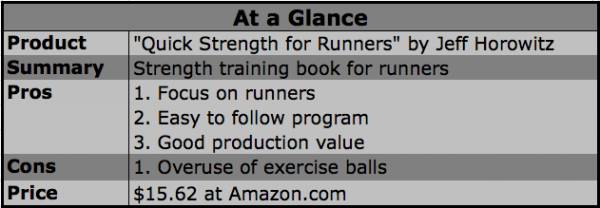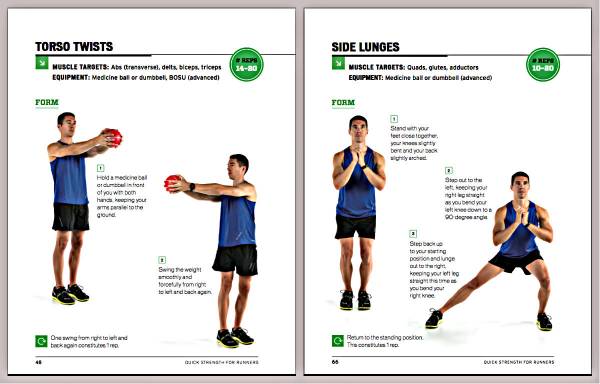
Study after study demonstrates resistance work isn’t just a good idea for injury prevention and bone health, but actually improves distance running performance. Nevertheless, many hardcore runners still tend to shun weight training. Recently, I read a book titled Quick Strength for Runners, which is written for runners who are looking to add resistance training to their routines.
The book’s author, Jeff Horowitz, is no stranger to exercise. Having run in over 175 marathons and ultra-marathons on multiple continents and in every state in the United States, let’s just say he has experience to spare. Despite his impressive running background, Jeff doesn’t look like what you may think the typical marathon runner would look like. He has a well-built musculature compared to the common conception of distance runners as being thin and lacking muscle tone.
Jeff’s physique is a reflection of his philosophy on being a healthy runner. In the book, Jeff notes that running form can be poor without the assistance of load-bearing training and cites real world examples of injuries that could have been prevented by strength training. Poor form slows you down and leads to injury over time, and strength training can help improve form. If you’re still not convinced by the author’s own experience, the book even covers common myths associated with weight training.

The rest of the book is a fairly standard, program-oriented book with detailed exercise descriptions. Each pair of pages details an exercise with full-color pictures, written descriptions, and advanced versions of the exercises. After this section you will find the eight-week, twice-per-week program that puts it all together. Jeff wraps up the book by explaining what to do after the eight-week program is up, and includes other goodies like hotel workouts.
In books like this one, the routine is often in danger of being too ambitious, but Jeff avoids this mistake. The exercise program is ideal for runners whose sole goal is running performance. Runners don’t need to lift huge weights or practice resistance training five days per week. What they do need to is to develop a modest degree of well-balanced strength. That said, for runners who also have other fitness goals that rely more on strength, this book might not be for you.
The only thing I didn’t like about the book is all the recommend BOSU ball work. Many of the advanced versions of exercises are done on BOSUs. This is explained in the book, but the justification isn’t convincing. The book is focused on strength development for runners, and strength is better developed on stable surfaces. I’m also not convinced that balance itself is well developed on a BOSU ball. However, there are other advanced versions for many exercises as well, and if you don’t want to do the BOSU stuff, there are plenty of ways to add resistance without one.
That said, the core of the program relies on established basics for developing a modest degree of balanced strength. It is ideal for runners who are looking for performance enhancement and injury prevention without a program that interferes with their road work. If that sounds like you, this book should be next on your list.
“Quick Strength for Runners” is available for $15.62 at Amazon.com.






